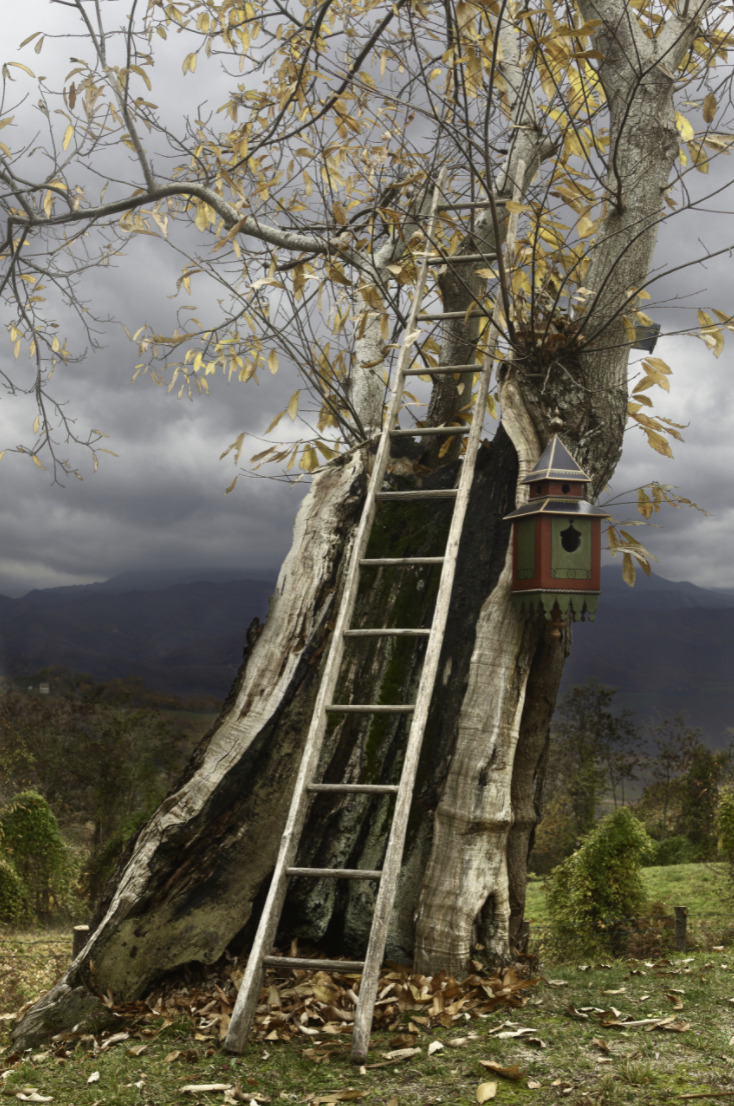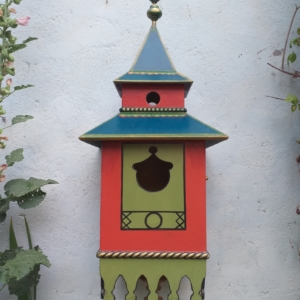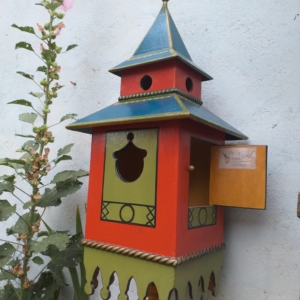DRAGONE BIRDHOUSE
To design the Dragon’s Nest we were inspired by the East. We built it with an elaborate fly-sheet and lacquered with
oriental colors and decorations. It has two entrance holes, one of which is the stylization of an oriental profile and is surmounted by an elaborate plume. The base rests on a hand-turned pine cone surmounted by a curtain made of wood and a small string frame. It is ideal for nesting birds such as hoopoes, orioles and other birds that love to nest in
holes in the trees. In winter, thanks to its impressive size, it becomes a valid refuge for squirrels and dormice. It has a side door to facilitate cleaning operations. We built it entirely by hand using marine wood
and expertly taking care of every aesthetic and functional detail.
Height 96 cm
Width 35 cm
Depth Cm 32
INFORMATION FOR USE
Some birds are very happy to accept an artificial nest
where to lay eggs, hatch and feed the young.
Among these the common Redstart, the Sparrow, the family of
Tit, the Wren, the Starling, etc.
Inside the nest they form a small moss cap,
feathers and twigs on the bottom for the female who will lay the
eggs. The hatching lasts on average two weeks and for the same
time the parents will bring food to the little ones.
Some species make up to three broods so the nest will be
“Busy” throughout the summer.




